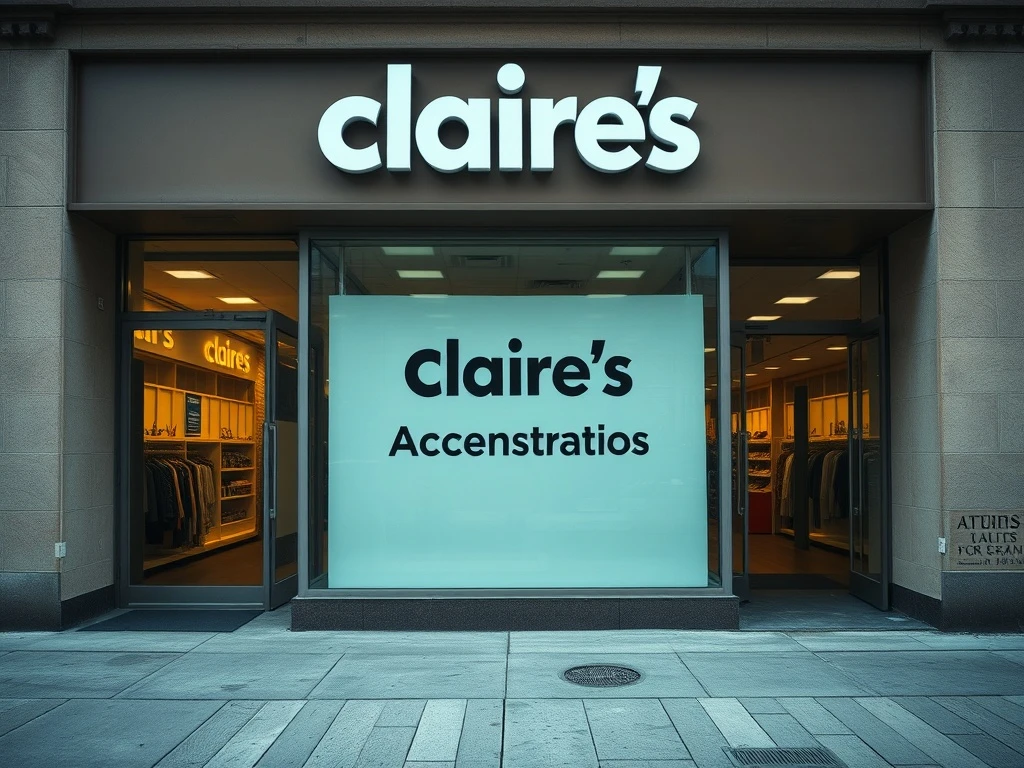The retail landscape often presents significant challenges. Recently, news broke that more than 2,000 jobs face uncertainty as Claire’s UK enters administration. This significant development follows closely on the heels of its American parent company filing for Chapter 11 bankruptcy protection. Many in the business community are closely watching this unfolding situation, particularly those interested in retail stability and employee welfare.
Understanding the Claire’s UK Administration
On August 14, 2025, the popular accessories and ear-piercing chain, Claire’s, confirmed its UK arm had entered administration. This decision directly impacts Claire’s Accessories UK Ltd, Claire’s European Services Limited, and Claire’s European Distribution Limited. Will Wright and Chris Pole of Interpath Advisory have been appointed as joint administrators. This strategic move aims to “protect the business and its stakeholders” as the company evaluates its options for the future. Consequently, the immediate goal is to stabilize operations during this critical period.
Chief executive Chris Cramer confirmed that the UK arm would continue trading throughout the administration process. He stated, “Taking this step will allow us to continue to trade the business while we explore the best possible path forward.” Cramer also expressed deep gratitude to employees, partners, and customers for their support during this challenging time. Administrators, including Wright from Interpath, plan to keep stores operational “as a going concern.” They will actively explore a sale to secure the brand’s long-term future. This approach seeks to minimize disruption while working towards a sustainable solution.
Why Claire’s Faces Financial Challenges
Founded in Chicago in 1961, Claire’s has grown significantly, operating over 2,750 stores across 17 countries. Additionally, it boasts numerous franchise outlets in regions like the Middle East and South Africa. In the UK and Ireland alone, the company manages 306 shops and employs approximately 2,150 people. However, the retailer has grappled with considerable difficulties in recent years. Firstly, shifting consumer habits have played a major role. Young consumers, a key demographic for Claire’s, increasingly prefer online shopping.
Secondly, the rapid rise of aggressive online competitors has significantly impacted sales. Companies like Shein and Temu offer similar products at often lower price points, attracting a large portion of Claire’s traditional customer base. Furthermore, tariffs imposed by the Trump administration also contributed to financial pressures, increasing operational costs. These external factors combined to create a challenging economic environment for the brand. Consequently, the company’s profitability faced consistent pressure.
A History of Financial Restructuring
This is not the first time Claire’s has faced severe financial distress. The company previously filed for bankruptcy in 2018. At that time, it underwent a significant restructuring. Elliot Management Corporation and Monarch Alternative Capital took over the company, successfully eliminating $1.9 billion in debt. This previous intervention provided a temporary reprieve. However, the underlying issues persisted, leading to the current situation. The retail sector remains highly competitive, demanding constant adaptation.
The current administration process mirrors some aspects of the 2018 bankruptcy, focusing on debt resolution and operational viability. According to Sky News, potential buyers for the UK arm have emerged. One notable interested party is Hilco Capital, known for owning Lakeland. However, sources indicate that bidders are proceeding cautiously. The sheer scale of Claire’s financial difficulties makes potential acquisitions complex. Therefore, securing a buyer will require careful negotiation and a clear path forward.
The Broader Retail Environment and Claire’s UK Administration
Chris Cramer explicitly cited several key factors behind the recent administration. These include increased competition within the retail sector, evolving consumer spending trends, and the ongoing, significant shift away from traditional brick-and-mortar retail. Alongside these market dynamics, substantial debt obligations and wider macroeconomic pressures further exacerbated the company’s financial strain. This situation highlights a broader trend affecting many established high street retailers. Consumers are increasingly turning to e-commerce, which offers convenience and often lower prices.
For instance, the rise of fast-fashion online retailers has fundamentally altered the accessories market. Traditional retailers like Claire’s struggle to compete on price and speed of trend adoption. This shift necessitates significant investment in online infrastructure and a re-evaluation of physical store strategies. The Claire’s UK administration thus serves as a stark reminder of the intense pressures facing the traditional retail industry globally. Businesses must innovate or risk falling behind. Adapting to digital transformation is no longer optional.
The administrators’ primary goal is to find a buyer who can inject capital and provide a new strategic direction for Claire’s UK. This would ideally preserve jobs and ensure the brand’s continued presence on the high street. However, the outcome remains uncertain. The retail sector continues its rapid evolution, and only time will tell if a new owner can navigate these complex challenges effectively. The future of Claire’s UK administration hinges on successful negotiations and a viable long-term business plan.
Frequently Asked Questions (FAQs)
1. What does it mean for Claire’s UK to enter administration?
When Claire’s UK enters administration, it means the company has appointed independent insolvency practitioners, Will Wright and Chris Pole of Interpath Advisory, to manage its affairs. This step aims to protect the business from creditors while a solution is sought, such as a sale or restructuring, to ensure its survival.
2. Why did Claire’s UK enter administration?
Claire’s UK entered administration due to a combination of factors, including increased competition from online retailers like Shein and Temu, shifting consumer spending habits away from physical stores, substantial debt obligations, and broader macroeconomic pressures. Its US parent company’s recent Chapter 11 bankruptcy also played a significant role.
3. What happens to the 2,000 jobs at risk?
The 2,000 jobs are currently at risk, meaning their future is uncertain. The administrators aim to keep stores trading as a going concern while exploring a sale. If a buyer is found, many jobs could be saved. However, if no viable solution emerges, job losses are a possibility as part of a restructuring or liquidation.
4. Can customers still shop at Claire’s UK stores?
Yes, according to Chief Executive Chris Cramer, Claire’s UK stores will continue to trade during the administration process. This allows the business to generate revenue and maintain operations while the administrators seek a long-term solution. Customers should not experience immediate changes to store operations.
5. What is the difference between administration (UK) and Chapter 11 bankruptcy (US)?
Both administration (UK) and Chapter 11 bankruptcy (US) are legal processes for financially distressed companies. Administration in the UK typically involves an insolvency practitioner taking control to rescue the company, sell its assets, or achieve a better outcome for creditors than liquidation. Chapter 11 in the US allows a company to reorganize its business affairs, debts, and assets under court protection, often while continuing to operate, with the goal of emerging as a healthier entity.
6. Who are the potential buyers for Claire’s UK?
Sky News has reported that Hilco Capital, which owns Lakeland, is among the potential buyers for Claire’s UK. However, sources indicate that bidders are cautious due to the scale of the company’s financial difficulties. The search for a suitable buyer is ongoing as part of the administration process.






















